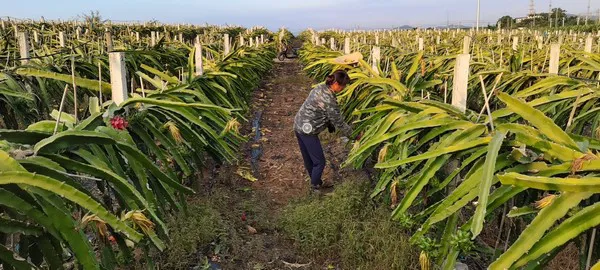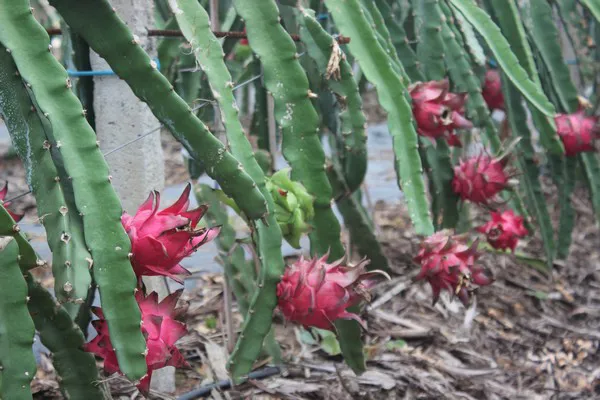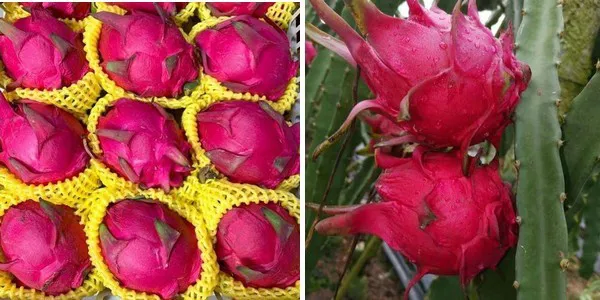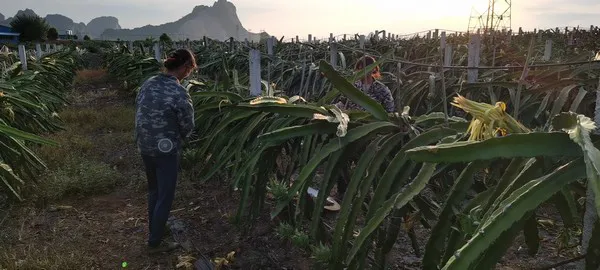Chinese market supply of Vietnamese red heart dragon fruit severely declined, and now there is a supply shortage of red heart dragon fruit in the Chinese market, so the price is soaring. Mr. Dong, a spokesperson for Guangxi Nanning-based dragon fruit grower Long Yi Sheng Fruit Industry, recently talked about conditions in the Chinese market for red heart dragon fruit.
The dragon fruit plantation of Long Yi Sheng Fruit Industry covers an area of 53 hectares and has an annual production volume of 2 million kg. The fifth harvest of this season has been brought in. According to Mr. Dong the weather conditions in Guangxi were great this year and the harvests this season were greater than last year in terms of production volume and product quality.

"The pandemic is still raging in Vietnam. The Chinese import volume of Vietnamese dragon fruit declined by 50%. In the past the overland route between Vietnam and Guangxi only took a truck full of dragon fruit around 2-3 days. That is now about one week. In July the authorities busted a dragon fruit smuggling ring, and a large volume of smuggled dragon fruit was destroyed. This further exacerbated the supply shortage in the Chinese dragon fruit market," explained Mr. Dong.
"But the decline of Vietnamese dragon fruit supply to the Chinese market also opens up commercial opportunities for domestic dragon fruit. This is when we familiarize Chinese consumers with the excellent flavor of domestic red heart dragon fruit."

"The production volume of domestic dragon fruit is small, and the taste is better than import dragon fruit, so the price is quite high compared to import dragon fruit. We have never experienced unmarketable conditions because our production volume is still relatively small. More recently the price of dragon fruit began to rise. The wholesale price of dragon fruit rose by 0.5 yuan [0.08 USD] per 0.5 kg last month. The market price of second-grade dragon fruit is now 2.5-3.0 yuan [0.39-0.46 USD] per 0.5 kg. That is somewhat higher than last year."

"The ongoing pandemic has had its impact on our production. Most of the pesticides and fertilizers we use in our plantation is imported. The outbreak of Covid-19 created obstacles for international distribution. The price of our fertilizer increased by more than 30%. Take urea or carbamide as an example. Last year we paid 1,800 yuan [278 USD] per ton, but this year we are paying 2,800 yuan [433 USD] per ton," said Mr. Dong. "However, even though the cost of agricultural resources increased, most dragon fruit farmers still make a profit."

Mr. Dong also explained that developments in the dragon fruit industry had accelerated in the last few years. The overall surface area devoted to dragon fruit plantation expanded. Although the market conditions worsened during the pandemic, people in the dragon fruit industry have high hopes for this season.
"A lot of Chinese consumers were unaware of the high quality of domestic dragon fruit. Now that the reputation of domestic dragon fruit is growing, the number of dragon fruit farmers grows too, and so the production volume expands. Nanning in Guangxi is one of the most important dragon fruit production areas in China. Dragon fruit plantations in Guangxi have around 8-10 harvests per year. The peak period begins in April and continues until January in the subsequent year. In 2018 the overall surface area devoted to dragon fruit plantation in Nanning only reached 2,667-3,333 hectares. In 2020 the surface area had increased to about 12,000 hectares. That is nearly a fourfold increase in only three years."
For more information:
Mr. Dong
Long Yi Sheng Fruit Industry
Tel.: 18176235439
WeChat: 18176235439
E-mail: 1091834512@qq.com
